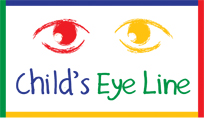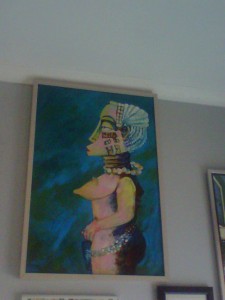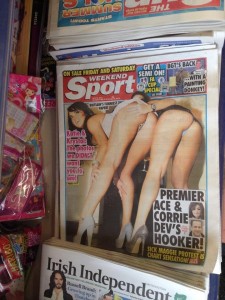FAQs
Why do we need legislation to stop shops displaying sexualised and porn images to children?
In 2010 the government commissioned an independent review called ‘Letting Children Be Children’ which looks at the sexualisation and commercialisation of children in society. It was conducted by Reg Bailey, Chief Executive of Mothers’ Union, which is why it is also known as ‘The Bailey Review’. The review addresses the concerns that children are exposed to a tide of sexual imagery in public places. As a result of the report, recommendations were made, including:
- Clampdown on sexualised ‘wallpaper’ surrounding children.
- Sexual images on magazine and newspaper front pages should be covered up.
- Retailers should sign up to a family friendly code of practice
Reg Bailey’s recommendations are based on parents’ concerns and are intended to support both parents, by making sure their views are taken more seriously by businesses and broadcasters, and children, by helping them understand the potential dangers they face.
However, 18 months on, Child’s Eye Line UK can prove that these guidelines have not been followed consistently across the retail sector. Child’s Eye Line UK and their supporters have collected photographs where the retailer guidelines are clearly being ignored. We have also documented complaints from parents and the responses from retailers. Disappointingly, responses and subsequent actions taken vary hugely when retailers receive a complaint about an inappropriate image in view of children. Some retailers take on board the concerns and change their displays; many others treat customers/parents with hostility, offer excuses as to why they need not change the display, or show ignorance of any government or regulatory body’s guidelines. Some make a change on the day but do not follow it up with any long term action.
This is why Child’s Eye Line UK believes that legislation is the only effective way to control how sexualised and pornographic images are displayed in shops and public spaces, where children are likely to be.
I have never noticed sexualised/porn images being displayed in shops, so what are you talking about? My child has never seen it either.
That’s a very interesting point. Occasionally people tell us they’ve never really noticed it. We think there’s a couple of reasons for this.
One reason may be as a result of years of desensitisation. Looking back to when many of us adults were young, it was fairly rare for sexualised/porn mags to be seen. However today the culture and climate of sexual imagery is very different, and it has crept up on us.
Media and shops have latched onto the fact that ‘sex /porn sells’. Most areas of mainstream media has been affected by this in some way. Rules about displaying sexualised images seem to have been relaxed. There was a time when a sex shop had blacked out windows. Now bondage accessories and almost naked models wearing g-strings are displayed in windows in high street stores.
With the explosion of the porn industry and the fact that it is currently easily available on the internet, soft porn has now become ‘normalised’ into mainstream culture. Children going into shops and public places where there are semi-naked, provocatively posed women regularly on display in mainstream newspapers will start to accept this as normal. They may not mention it to you, they may not ask you any questions, but they will be taking it in and adding it to their understanding of what is normal. If you don’t think children should find it normal to see sexualised images in their daily lives, you’ve come to the right place – we’d love for you to be involved!
Why are you campaigning against certain women's mags?
Child’s Eye Line UK has followed the magazines, Pick Me Up, Chat, That’s Life, Real People, Take A Break and Love It! for a year. Every week the stories on the front page use shock, sensational headlines about child abuse. These mags consistently use salacious language about serious crimes to sell. It is clear that they are using sex abuse as a sales tool for profit.
Lines such as, “Dad dressed as Santa and raped us”, “raped at 5 by school bus driver”, “Paedo said he’d kill me”, “Sordid lust of my paedo uncle” are common.
Rape Crisis have slammed the magazine headlines as, “triggering, offensive, trivialising and ignorant of the lifelong impacts for survivors of child sexual abuse”.
Children learning to read see these mags at their height, just above kids mags in every newsagent and supermarket. We aim to change this culture of normalising rape. We believe that magazines should not use sexual violence to sell. We are asking all retailers to be responsible with their displays and keep this material away from children and abuse survivors.
This sounds like censorship to me. Are you campaigning for a ban on nudity and sexual content in papers and magazines?
Child’s Eye Line UK is not calling for a ban on graphic content. As adults, we are all free to choose whether to access sexual and violent content, within the remit of the law. Children should be protected from graphic material until they are old enough to make that informed decision for themselves. Hence we are asking for recommendations about the display of graphic, sexualised content to be enforced by retailers and other bodies.
Nor are we anti-nudity – our argument is with degrading, sexualised or otherwise damaging images. Child’s Eye Line UK is absolutely in favour of promoting positive body image. We want men and women, girls and boys to feel confident in their own skins and to feel accepted as they are, and we believe that less focus on sexualising and objectifying women for public consumption can only help achieve this. Context is important here: the sight of women in bikinis or topless is natural and expected when you go to the beach, much less so when you pop into the newsagent for a packet of chewing gum. Moreover, those women on the beach don’t spend their time leaning over provocatively to display their cleavage, nipples or buttocks to passers by.
Child’s Eye Line UK is also very much pro-breastfeeding. There is a vast difference between the image of a woman feeding her child and the image of a woman offering her breasts to the casual shopper. We would like every new mother who chooses to breastfeed to feel confident that she will not face public ridicule or vilification for doing so, and we believe that reducing the focus within our society on breasts as purely sexual objects might be of some help in this regard.
Is Child's Eye Line UK just for parents?
No! Our campaign is open to anyone who is concerned about the issues we have raised. Our supporters are women and men, young and old, parents and non-parents. The support shown to Child’s Eye Line UK by people across the country has been amazing and is very valuable. If you feel that children shouldn’t have to see adult content when purchasing their weekly comic, this campaign is for you.
Is Child's Eye Line UK independent?
Child’s Eye Line UK works with MPs, ministers and Parliamentary groups but is NOT affiliated to any political party or religion.
What about art?
Art is the ‘expression or application of human creative skill and imagination, typically in a visual form such as painting’. Art comes in many forms and some include nudity. As mentioned in our FAQS we are not against nudity or the natural human body. Here are some examples that are art.
Art examples that we DO NOT include as sexual imagery.
NOT ART
We propose that sexual imagery that may also be art may obtain a license to display in public. The purpose of the campaign is to protect children from mainstream sexualisation that can affect a healthy attitude to sex and body image. We do not consider that genuine art will have this effect on children.
Isn't it up to parents to protect children?
Yes! That is what we are saying, parents have a responsibility to protect children. The problem we have is that parents are unable to protect children as sexual imagery and pornography is in every arena. See the Children’s Commissioner report entitled ‘Basically porn is everywhere’ http://www.childrenscommissioner.gov.uk/content/press_release/content_505.
Parents are asking for help from the government, retailers, the media, internet service providers and the porn industry. Protecting children from imagery in public (newsagents, supermarkets, post offices etc) and online is a mammoth task that many parents are struggling to navigate. Child’s Eye Line UK aims to support parents to protect their children.
For instance, a parent can only protect children from the degrading sexual imagery in shops (The Sport, Nuts, Zoo) if they either do not go into the shop or blindfold their child. Neither is a suitable solution. We have evidence from many shops including Co-op, Tesco and Spar.
Many parents who completed our survey told us that when they have complained they were ignored, laughed at, patronised and some were even threatened. This is not acceptable.
What about breastfeeding and breast cancer images?
These images are NOT sexual. We fully support breastfeeding in public as it is a natural human function. We fully support any image relating to breast cancer support.
Is this censorship?
No, it is context. The right to freedom of expression and speech is not absolute. Children do not need sexual imagery in their childhood and therefore Child’s Eyes UK campaigns to protect their rights. The right of people who want sexual material does not trump the right of children not to see it. We do not campaign for a blanket ban, we campaign for responsible displays and no porn or sexual imagery in public places.
What about the Internet? Are you for the opt-in?
Yes we are and here are the reasons why:
*Many children are viewing porn (See Children’s Commissioner’s recent report ‘Basically Porn is Everywhere’). Many are having completely unrestricted access to the Internet. Many parents have filters, many more do not. Many children live in homes where this is not considered or they are living in chaotic lifestyles. To teach parents about this will take years and a whole generation will be affected by being exposed to images before they are able to understand them. We need to protect all children and particularly the most vulnerable children.
*The type of porn that is available on the most used porn sites is commonly ‘teen’, ‘brutal’, ‘anal’, ‘rape’ and other videos that depict sex in a violent or degrading way. In particular, to women. This is unacceptable and damaging for young eyes.
*There have been many recent court cases of children/teens raping younger children. Judges have cited the unrestricted access to porn as an issue. It appears that early exposure to porn could be creating abusers, harassers and rapists. The effect is devastating not only on the victim and family but on the perpetrator and their family. If these situations can be minimised or prevented then it is necessary to take any steps to make that happen.
*Children are curious. If they type in the word porn to Google, the results are astounding, including Google images. A curious glimpse can be very distressing.
*Opt-In gives everyone in society the freedom to choose whether they want porn or not. It is a compromise and a balance of the right to freedom of expression and the rights and protection of children.
Will opt-in block legitimate sites?
Possibly. We are keeping a close eye on the detail as we are NOT campaigners for censorship nor do we want to see legitimate sites blocked. We appreciate that this may happen as does at present with internet filters, likewise pornographic images and YouTube clips get through filters now. It is a tricky balance and we want to help make it work for everyone but our main priority will always be children.
Women’s mags are just as bad and what about objectification of men?
Child’s Eye Line UK is committed to protecting children from pornography, sexual imagery and frightening headlines.
We are focusing heavily on sexual imagery at the moment. The overwhelming majority of sexual imagery is of women. We have been asked why we do not feature sexual images of men. The short answer is that we have not found any in public where children can see. We did feature a gay magazine on the top shelf in WHSmith (featured in our video) that could have been viewed by older children. If we see any sexual imagery of men, we make exactly the same complaints as we do when it is women. Men’s Health mag has been criticised by some for damaging portrayals of male bodies. We agree that this is an issue of growing significance and is affecting young boys. We agree that boys and men are experiencing body image problems as a result of this type of media, however our primary focus is sexual imagery, porn and frightening headlines.
We object to women’s magazines that carry sensational and terrifying headlines in child’s view. We featured this in our video. We feel that such stories often glorify rape and child abuse. The kind of stories that are in bold writing on the front of such magazines can be very frightening for children. We always object wherever these magazines are visible to children and particularly when they are placed by children’s comics.
Why do you campaign about lads' mags covers and Page 3 when there is much worse pornography on the Internet?
Sexual images displayed in shops are unavoidable. We believe viewing sexualised images should be a choice, for adults; they should not be forced on children. We campaign to protect children from more hardcore pornography online, however research shows that soft porn images, such as those featured on the front of lads’ mags and on Page 3, are also harmful to children as they ‘change values.’ ‘Exposing children to soft porn, sexually objectified imagery makes children more accepting of violence against women and girls.’ (Kevin Browne, Professor of Forensic Psychology at Nottingham University).
Some have argued that the demise of lads' mags and Page 3 means teenagers will seek out porn online and this is more harmful. Do you agree?
Lads’ mags and online porn are not mutually exclusive; they co-existed for over ten years. Consumers of lads’ mags were already consuming porn online for many years before lads’ mags went out of print. Research suggests that lads’ mags and Page 3 acted as gateways or ‘permission givers’ for children to become interested in porn and seek out porn sites online.
We believe porn should be easily accessible to adults only and consumed in private. We are campaigning to make sure children are not exposed to harmful material and that porn sites are not easily accessible to children. The context of lads’ mags and Page 3 was particularly harmful as it endorsed the sexual objectification of women which has been linked to attitudes which underpin violence against women and girls.



Follow Us!